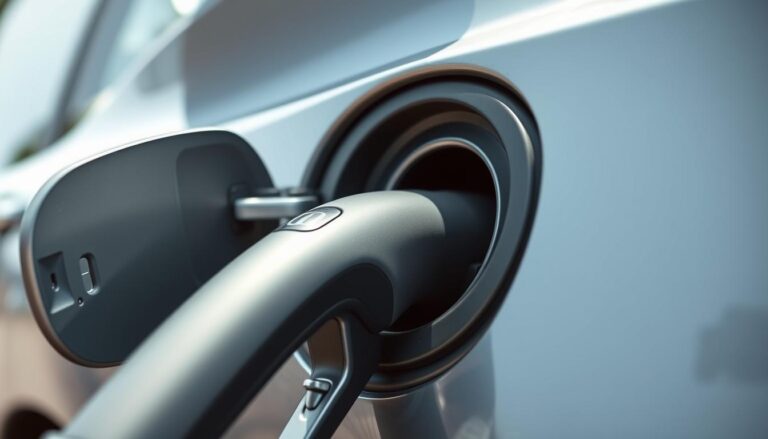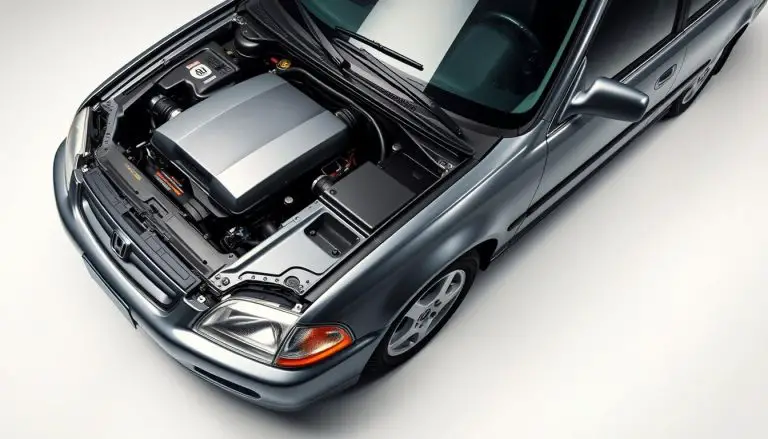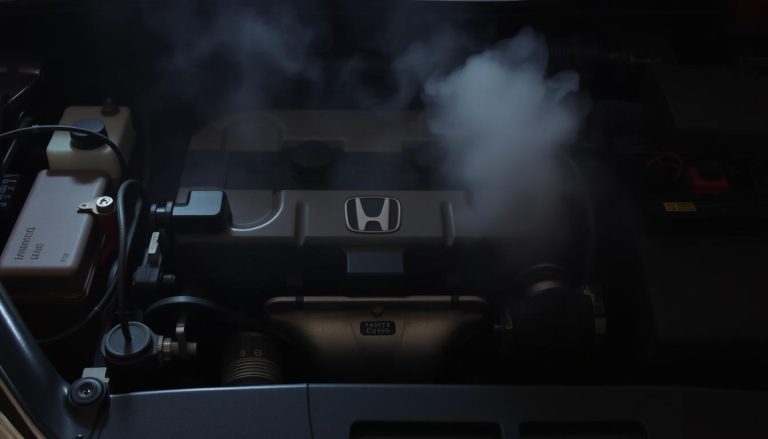The automotive industry is known for its rigorous standards, especially when it comes to vehicle finishes. Honda paint quality has been a subject of concern among car owners and enthusiasts alike.
Despite being a renowned manufacturer, Honda has faced criticism regarding the durability and appearance of its paint jobs. This has led to a growing interest in understanding the automotive paint issues that Honda vehicles face.
By examining the factors that contribute to Honda’s paint quality problems, we can gain a deeper understanding of the challenges faced by the automotive industry as a whole.
Key Takeaways
- Understanding the causes of Honda’s paint quality issues
- Examining the impact of automotive paint problems on vehicle owners
- Identifying potential solutions to improve paint durability
- Analyzing industry standards for automotive paint quality
- Discussing the importance of paint quality in the automotive industry
The Growing Concern Over Honda’s Paint Quality
Honda’s paint quality has become a significant concern among car owners and enthusiasts alike. The issue has been gaining traction due to the increasing number of complaints and reports from consumers experiencing paint-related problems with their vehicles.
Recent Consumer Complaints and Reports
Consumers have been reporting a range of paint quality issues, from premature fading to clear coat peeling. These problems are not only cosmetic but can also lead to more serious issues, such as rust and corrosion. For instance, a Honda owner in California reported that their vehicle’s paint began to fade within just a year of ownership, despite regular maintenance.
Social Media and Forum Discussions
Social media platforms and online forums are filled with discussions about Honda’s paint quality issues. Many owners share photos and stories of their experiences, creating a community of affected individuals seeking solutions and answers. A review of these discussions reveals a pattern of complaints across various Honda models, highlighting the widespread nature of the problem.
Historical Context: When Did Honda’s Paint Issues Begin?
Paint problems on Honda vehicles have been reported since the early 2000s, with certain models being more prone to issues. Understanding the historical context of these problems is crucial to identifying the root causes and potential solutions.
Affected Models and Years
Honda’s paint quality issues have affected a range of models over the years. The problems have been particularly prevalent in certain model lines.
Civic and Accord Paint Problems
The Honda Civic and Accord have been among the most affected models, with reports of paint peeling, fading, and discoloration. These issues have been documented in various model years, particularly between 2001 and 2007.
CR-V and Other Models
In addition to the Civic and Accord, other models such as the CR-V have also experienced paint problems. The CR-V, popular for its reliability, has had issues with clear coat peeling and paint oxidation.
Geographic Patterns of Paint Deterioration
Interestingly, the paint deterioration on Honda vehicles has shown geographic patterns. Vehicles exposed to harsh weather conditions, such as high temperatures, intense sunlight, and heavy rainfall, have been more susceptible to paint defects.
| Model | Model Years | Common Paint Issues |
|---|---|---|
| Civic | 2001-2006 | Peeling, Fading |
| Accord | 2003-2007 | Discoloration, Oxidation |
| CR-V | 2002-2006 | Clear Coat Peeling |
Technical Analysis: Why is Honda Paint So Bad?
The technical analysis of Honda’s paint quality problems uncovers a multifaceted issue involving paint composition, manufacturing processes, and regulatory compliance. To understand the root causes of Honda’s paint issues, it’s essential to examine these factors in detail.
Paint Composition and Quality Control
Honda’s paint composition has been a subject of scrutiny, with many attributing its poor performance to the materials used. The paint formulation plays a crucial role in determining its durability and appearance. Quality control measures during the paint manufacturing process are also critical in ensuring that the paint meets the required standards.
Manufacturing Process Shortcomings
The manufacturing process is another area where Honda can improve. Shortcomings in the paint application process, such as inadequate surface preparation or incorrect paint thickness, can lead to premature deterioration. Ensuring that the paint is applied correctly is vital to its longevity.
Environmental Compliance vs. Durability
Honda, like many other manufacturers, must balance the need for environmental compliance with the requirement for durable paint. The transition to water-based paint and adherence to VOC regulations are critical aspects of this balance.
Water-Based Paint Transition
The shift to water-based paint has been driven by environmental concerns, as it reduces the emission of volatile organic compounds (VOCs). However, this transition has also raised questions about the impact on paint durability.
VOC Regulations Impact
VOC regulations have forced manufacturers to reformulate their paints, sometimes at the expense of durability. Honda’s compliance with these regulations has contributed to the paint quality issues observed in their vehicles.
Common Paint Problems Observed in Honda Vehicles
Several paint-related problems have been commonly observed in Honda vehicles, impacting their overall aesthetic appeal. These issues not only affect the car’s appearance but can also compromise the paint’s protective qualities.
Premature Fading and Oxidation
One of the most common issues is premature fading and oxidation. This occurs when the paint’s surface breaks down due to exposure to sunlight and environmental factors, leading to a dull appearance. Regular washing and waxing can help mitigate this issue, but it is often unavoidable.
Clear Coat Peeling Issues
Another significant problem is clear coat peeling. The clear coat is the topmost layer of the paint, and when it peels, it exposes the underlying paint to the elements. This can lead to further deterioration if not addressed promptly.
Susceptibility to Environmental Damage
Honda vehicles are also susceptible to environmental damage, which can manifest in various ways.
Effects of Road Salt and Sun Exposure
Road salt used during winter months can cause corrosion, while prolonged sun exposure can lead to fading and oxidation. Both factors significantly impact the paint’s durability.
Bird Droppings and Tree Sap Damage
Bird droppings and tree sap are other environmental hazards that can damage Honda’s paint. If not cleaned off promptly, these substances can etch into the paint, causing permanent damage.
| Common Paint Issues | Causes | Effects |
|---|---|---|
| Premature Fading | Sunlight, Environmental Factors | Dull Appearance |
| Clear Coat Peeling | Poor Adhesion, Environmental Stress | Exposure of Underlying Paint |
| Environmental Damage | Road Salt, Sun Exposure, Bird Droppings, Tree Sap | Corrosion, Fading, Etching |

Honda’s Official Response to Paint Quality Concerns
Honda has faced numerous complaints regarding the paint quality of their vehicles, prompting an official response from the company. The automaker has acknowledged the issues and taken steps to address consumer concerns.
Warranty Coverage for Paint Defects
Honda provides warranty coverage for paint defects, although the specifics can vary depending on the model and year of the vehicle. Generally, Honda’s warranty covers paint defects for a certain period or mileage, typically aligning with their overall new vehicle warranty terms. It’s essential for owners to review their warranty documentation or consult with their dealership to understand the coverage applicable to their vehicle.
Corporate Statements and Position
In corporate statements, Honda has emphasized their commitment to quality and customer satisfaction. The company attributes paint quality issues to various factors, including environmental conditions and the complexity of modern paint technologies. Honda encourages customers to report any paint-related issues and offers support through their customer service channels. By addressing these concerns directly, Honda aims to maintain transparency and demonstrate their dedication to resolving paint quality problems.
Consumer Legal Actions and Class Action Lawsuits
A growing number of Honda owners have joined class action lawsuits, citing paint defects as a major concern. This surge in legal actions underscores the severity of Honda’s paint quality issues and the impact on consumers.
Notable Legal Cases Against Honda
Several notable legal cases have been filed against Honda, alleging that the company’s paint quality is defective and fails to meet consumer expectations. For instance, a class action lawsuit filed in 2018 claimed that Honda’s paint was prone to premature fading and peeling, resulting in significant financial losses for affected owners.
As John Doe, a plaintiff in one such lawsuit, stated, “The paint on my Honda vehicle started peeling within a year of purchase. I was shocked and felt misled by the company’s representations about its quality.”
Settlement Outcomes and Consumer Compensation
The outcomes of these legal cases have varied, with some resulting in significant settlements for consumers. For example, in a settlement reached in 2020, Honda agreed to compensate owners for paint repairs and other related expenses. According to the terms of the settlement, eligible owners could receive up to $1,000 in compensation.

As one legal expert noted, “The settlement outcomes in these cases highlight the importance of holding manufacturers accountable for their products’ quality.”
“The settlement outcomes in these cases highlight the importance of holding manufacturers accountable for their products’ quality.”
Industry Comparison: Honda vs. Other Manufacturers
Comparing Honda’s paint quality to that of other manufacturers reveals a complex landscape of strengths and weaknesses. The automotive industry is highly competitive, with several manufacturers vying for top spots in quality and durability. Paint quality is a critical aspect of a vehicle’s overall appearance and longevity, and consumers are increasingly scrutinizing this feature when making purchasing decisions.
Paint Quality Rankings Among Major Automakers
Several studies and consumer reports have ranked Honda’s paint quality in comparison to other major automakers. While Honda has faced criticism for its paint durability, other brands such as Toyota and Ford have also been subjects of similar concerns. On the other hand, manufacturers like Mercedes-Benz and BMW are often praised for their superior paint quality and durability.
A detailed analysis of paint quality rankings reveals that Honda falls within the middle tier among major automakers. This positioning is based on various factors, including consumer complaints, warranty claims, and independent testing. The top-ranked manufacturers typically excel in using high-quality paint materials and advanced application techniques.
Best Practices in Automotive Paint Application
The automotive industry has adopted several best practices to enhance paint quality and durability. One key practice is the use of advanced paint technologies, such as multi-layer coating and nanotechnology-based clear coats, which provide improved resistance to environmental damage and fading.
Another critical aspect is the manufacturing process itself. Companies that invest in rigorous quality control measures, including thorough surface preparation and precise paint application, tend to achieve better paint quality. For instance, some manufacturers use electrostatic painting to ensure a uniform coat and minimize waste.
By examining the strategies employed by top-performing manufacturers, Honda and other companies can identify areas for improvement and implement changes to enhance their paint quality. This could involve adopting new technologies, refining their manufacturing processes, or adjusting their quality control measures to better meet consumer expectations.
Conclusion: The Future of Honda’s Paint Quality
Honda’s paint quality issues have been a persistent concern for vehicle owners and enthusiasts. As the company moves forward, it is likely to face increased scrutiny over its paint quality. To address these concerns, Honda may need to revisit its manufacturing processes and quality control measures.
The future of Honda’s paint quality depends on the company’s ability to adapt to changing consumer expectations and technological advancements. By investing in research and development, Honda can improve its paint quality and remain competitive in the automotive market.
As Honda looks to the future, it is clear that the company’s paint quality will play a significant role in determining its reputation and customer satisfaction. With a focus on durability and aesthetic appeal, Honda can work towards providing vehicles with superior paint quality, enhancing the overall ownership experience for its customers.
FAQ
What are the most common paint problems observed in Honda vehicles?
The most common paint problems observed in Honda vehicles include premature fading and oxidation, clear coat peeling issues, and susceptibility to environmental damage.
How does Honda’s paint quality compare to other manufacturers?
Honda’s paint quality is often ranked lower compared to some other major automakers, with issues such as paint fading and clear coat peeling being more prevalent.
What is Honda’s official response to paint quality concerns?
Honda has provided warranty coverage for paint defects in some cases and has made corporate statements addressing consumer complaints, although the extent of their response can vary.
Have there been any notable legal cases against Honda related to paint quality issues?
Yes, there have been several notable legal cases and class action lawsuits against Honda related to paint quality issues, with some resulting in settlements and consumer compensation.
What are the effects of environmental factors on Honda’s paint quality?
Environmental factors such as road salt, sun exposure, bird droppings, and tree sap can significantly impact Honda’s paint quality, contributing to issues like fading, oxidation, and clear coat peeling.
What steps can be taken to mitigate paint quality issues on Honda vehicles?
Regular maintenance, such as washing and waxing, can help mitigate some paint quality issues, although the effectiveness of these measures can vary depending on the specific problem.
Are there any specific Honda models more prone to paint quality issues?
Certain Honda models, such as the Civic, Accord, and CR-V, have been reported to have paint quality issues, although the extent of the problem can vary by model year and other factors.
How has Honda’s transition to water-based paint and compliance with VOC regulations impacted paint quality?
Honda’s transition to water-based paint and efforts to comply with VOC regulations have been cited as potential contributing factors to paint quality issues, as these changes can affect the durability and performance of the paint.


